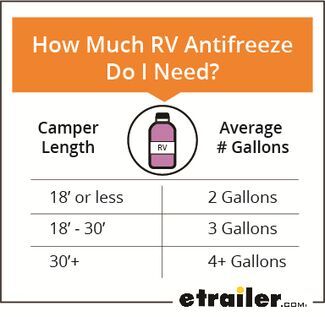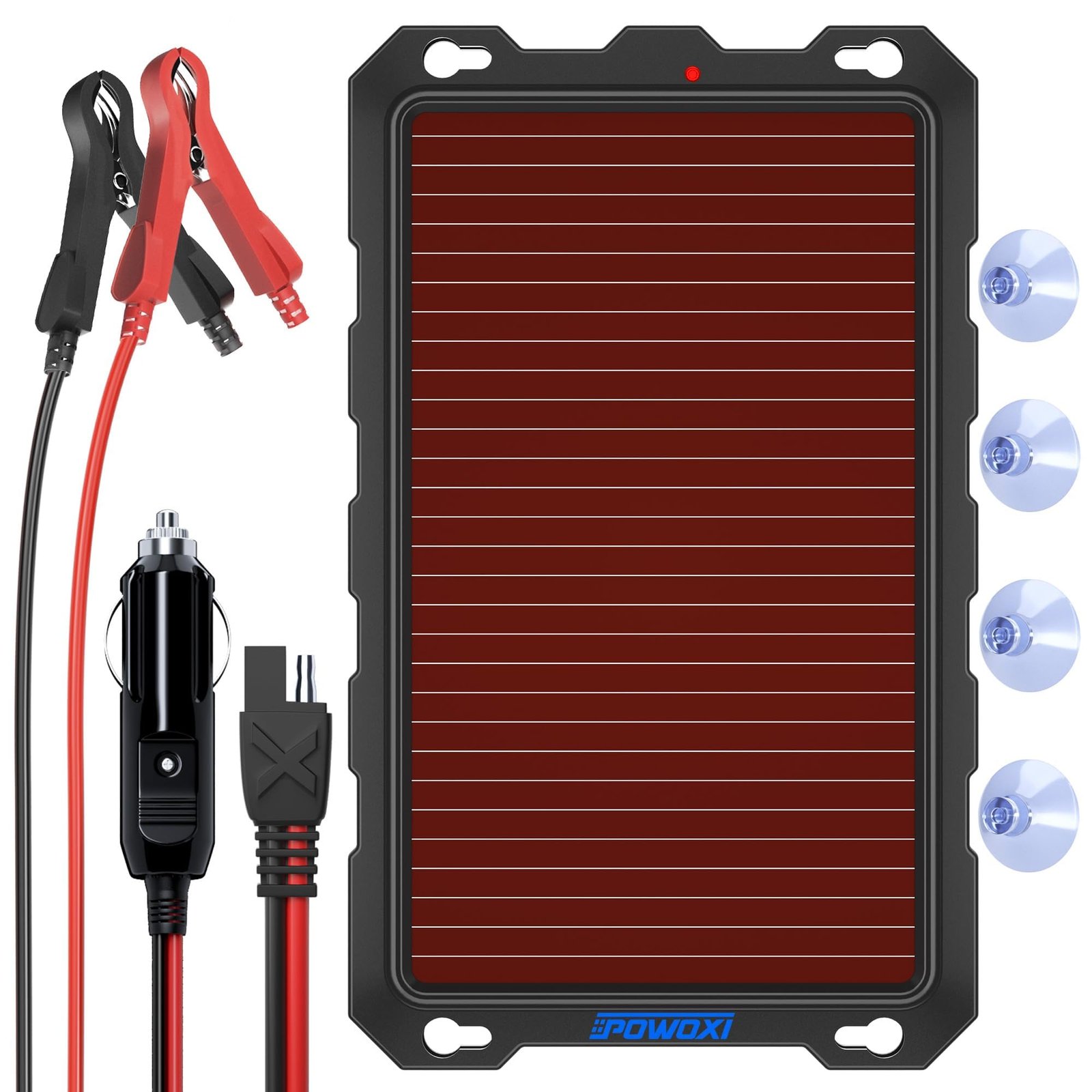To winterize your RV, you need about 2 to 3 gallons of antifreeze. This amount ensures your RV’s plumbing is protected from freezing temperatures.
Winterizing your RV is crucial for its maintenance. As temperatures drop, water in your RV’s pipes can freeze and cause damage. Using antifreeze prevents this from happening. It is important to know the right amount to use. Too little, and your pipes could freeze.
Too much, and you may waste money. In this guide, we will help you determine the correct amount of antifreeze needed. This will keep your RV safe and ready for the next adventure. Let’s dive into the details and ensure your RV is winter-ready.

Credit: www.thervgeeks.com
Importance Of Winterizing Your Rv
Winterizing your RV is crucial to protect your investment and ensure it runs smoothly. Antifreeze plays a key role in this process. It prevents your RV’s plumbing system from freezing and cracking during cold months. Failing to winterize can lead to costly repairs and significant downtime.
Preventing Damage
Freezing temperatures can cause severe damage to your RV’s plumbing system. Water left in the pipes can freeze and expand. This leads to cracks and bursts. Antifreeze prevents this by lowering the freezing point of water in your RV’s system. Proper winterization helps you avoid these issues and keeps your RV in good condition.
Ensuring Longevity
Winterizing your RV extends its lifespan. Regular maintenance and proper storage during winter months are essential. Antifreeze helps protect your RV’s internal systems from the elements. This ensures your RV remains functional and reliable for years to come.

Credit: rvlife.com
Understanding Antifreeze
Winterizing your RV is essential to protect it from freezing temperatures. One critical step is using antifreeze. But, how much antifreeze do you need? Understanding antifreeze is the first step.
Types Of Antifreeze
There are different types of antifreeze available. Each type has unique properties. Here are the main types:
| Type of Antifreeze | Color | Properties |
|---|---|---|
| Ethylene Glycol | Green | Highly effective, but toxic |
| Propylene Glycol | Pink | Less toxic, RV-safe |
| Alcohol-Based | Blue | Less effective, budget-friendly |
Choosing The Right Antifreeze
Choosing the right antifreeze is crucial. Consider these factors:
- Safety: Propylene glycol is safer for RV use.
- Effectiveness: Ethylene glycol is highly effective but toxic.
- Budget: Alcohol-based antifreeze is cheaper but less effective.
Always check the label before buying antifreeze. Ensure it is rated for RV use. This will help protect your RV’s plumbing system.
Calculating Antifreeze Quantity
Winterizing your RV is essential to protect it from freezing temperatures. One crucial step is determining how much antifreeze you need. This ensures your RV plumbing system remains safe and functional through the winter months.
Factors To Consider
Several factors affect the amount of antifreeze required. First, consider the type of antifreeze you will use. RV-specific antifreeze is designed for plumbing systems and is non-toxic. Next, think about your RV’s plumbing complexity. More pipes and fixtures mean more antifreeze.
Another factor is the temperature range in your area. Colder climates require more antifreeze. This ensures that every part of your plumbing is protected. Finally, consider any extra features like washing machines or ice makers. These will need additional antifreeze to winterize properly.
Rv Size And Antifreeze Needs
The size of your RV plays a significant role. A smaller RV with fewer fixtures will need less antifreeze. Generally, a small RV might need about 2-3 gallons of antifreeze.
Larger RVs with more complex systems will require more. You might need up to 4-5 gallons for a medium-sized RV. For a large RV with many fixtures, you may need 6 gallons or more.
Always err on the side of caution. It’s better to have a little extra antifreeze than not enough. This ensures complete protection for your RV’s plumbing system during winter.
Step-by-step Winterization Process
Winterizing your RV is essential to protect it from freezing temperatures. The process involves several steps to ensure your RV’s water system is safe. This guide will help you through each step.
Preparing Your Rv
Start by gathering all the necessary tools and materials. You will need RV antifreeze, a water pump converter kit, and basic hand tools. Make sure your RV is parked on a level surface.
Turn off and disconnect all electrical power sources. This includes the main power supply and any onboard generators. Open all faucets to release pressure in the water lines. Ensure all water heaters and water pumps are turned off.
Draining The Water System
Locate and open the fresh water tank drain valve. Allow all the water to drain out completely. Next, find the gray and black water tank drain valves. Open these valves and let the tanks empty.
Flush the toilet to ensure all water is removed. Open the hot and cold water faucets, including the shower. This helps drain any remaining water from the lines. Don’t forget the outdoor shower if your RV has one.
Once all the water is drained, close all the valves. Use a water pump to blow out any remaining water in the lines. This step is crucial to prevent any water from freezing and causing damage.
Applying Antifreeze To Rv Systems
Winterizing your RV is crucial to prevent damage from freezing temperatures. Applying antifreeze to your RV systems ensures that your water lines and holding tanks remain safe during the cold months. This process is straightforward and essential for RV maintenance.
Water Lines
Start by draining all the water from your RV’s water lines. Open all faucets and let the water flow out completely. Once the lines are empty, close the faucets. Next, use a water pump converter kit or a hand pump to introduce the antifreeze into the system.
Turn on the pump and open each faucet one by one. Let the antifreeze flow until you see a steady stream of pink liquid. Repeat this for all faucets, including the shower and outdoor taps. Don’t forget to flush the toilet until you see antifreeze there too.
Holding Tanks
Empty both the black and grey holding tanks. Clean them thoroughly to remove any residue. Once clean, pour one to two gallons of antifreeze directly into each holding tank. This helps to prevent any remaining water from freezing and causing damage.
Also, pour a small amount of antifreeze into each drain. This includes the kitchen sink, bathroom sink, and shower drain. The antifreeze will protect the P-traps and prevent them from freezing.
Common Mistakes To Avoid
Winterizing your RV is essential to prevent damage during cold months. But many RV owners make mistakes that can be costly. Here are some common errors to avoid.
Using Inappropriate Antifreeze
Not all antifreeze is suitable for winterizing an RV. Automotive antifreeze is not safe for your RV’s plumbing system. It can be toxic and harmful to your water lines. Always use RV-specific antifreeze. This type is non-toxic and safe for your system.
Here’s a simple table to highlight the differences:
| Type of Antifreeze | Usage | Safety |
|---|---|---|
| Automotive Antifreeze | Car Engines | Toxic |
| RV Antifreeze | RV Plumbing | Non-Toxic |
Using the wrong antifreeze can lead to health hazards and system damage. Always read the labels carefully before purchasing.
Forgetting To Drain Water
One of the biggest mistakes is forgetting to drain water from the pipes. If water remains, it can freeze and burst the pipes. Always drain all water from your system before adding antifreeze.
Follow these steps to ensure you don’t miss any spots:
- Turn off the water heater and drain it.
- Open all taps and showerheads.
- Flush the toilet to remove any remaining water.
- Use a water pump to push out the last drops.
Forgetting this step can lead to costly repairs. Make sure every part of your water system is dry before winterizing.
Storing Your Rv Post-winterization
After winterizing your RV, proper storage is crucial to ensure it remains in excellent condition. This process involves finding the right storage conditions and performing regular maintenance checks. Here are some essential tips for storing your RV post-winterization.
Ideal Storage Conditions
Choosing the right storage location is vital. Your RV needs protection from harsh weather, pests, and potential theft. Here are some ideal storage conditions:
- Indoor Storage: This is the best option. It provides protection from snow, rain, and sun.
- Covered Storage: If indoor storage is not available, use a covered area. This could be a carport or a custom RV cover.
- Outdoor Storage: If you must store your RV outdoors, invest in a high-quality RV cover. Ensure it fits well and is designed for your RV model.
Regular Maintenance Checks
Even in storage, your RV requires regular maintenance checks. This ensures it remains in top condition for your next adventure.
- Inspect Tires: Check the tire pressure monthly. Inflate them as needed to avoid flat spots.
- Battery Maintenance: Disconnect the battery if storing for a long period. This prevents it from draining. Charge it periodically.
- Check for Leaks: Inspect the roof, windows, and doors for any signs of leaks. Address any issues immediately.
- Ventilation: Open vents slightly to allow air circulation. This helps prevent mold and mildew.
- Rodent Control: Place rodent repellents inside the RV. This keeps pests from nesting inside.
By following these tips, your RV will stay in great shape throughout the winter months. Proper storage and regular maintenance are key to a long-lasting and enjoyable RV experience.

Credit: www.etrailer.com
Frequently Asked Questions
How Much Antifreeze Is Needed For An Rv?
Typically, you need 2 to 3 gallons of antifreeze to winterize an RV. The exact amount depends on the size and plumbing system of your RV.
Can I Use Regular Antifreeze In My Rv?
No, you should use RV-specific antifreeze. Regular antifreeze is toxic and can damage your RV’s plumbing system.
How Often Should I Winterize My Rv?
You should winterize your RV every year before the first freeze. This prevents damage to your plumbing system during cold months.
What Are The Steps To Winterize An Rv?
First, drain all water tanks and lines. Then, add RV antifreeze to the plumbing system. Finally, ensure all faucets and valves are protected.
Conclusion
Winterizing your RV is essential. Use the right amount of antifreeze. Typically, 2 to 3 gallons should suffice. Check your RV manual for specific needs. Proper winterization protects your RV from freezing damage. Prepare ahead to avoid problems. Take the time to ensure everything is done correctly.
Your RV will be ready for use when spring arrives. Enjoy peace of mind knowing your RV is safe. Happy travels and stay warm!



